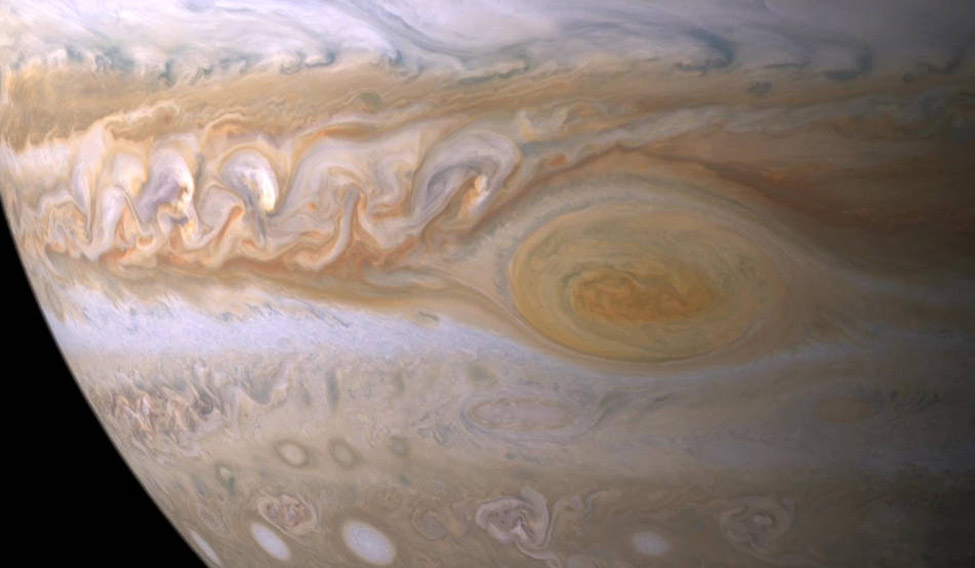Jupiter's Great Red Spot—the solar system's most famous storm—is almost one-and-a-half Earths wide and penetrates about 300 kilometres into the planet's atmosphere, according to data collected by NASA's Juno spacecraft.
Other revelations from the mission include that Jupiter has two previously uncharted radiation zones, NASA researchers said.
"One of the most basic questions about Jupiter's Great Red Spot is: how deep are the roots?" said Scott Bolton, Juno's principal investigator from the Southwest Research Institute in the US.
"Juno data indicate that the solar system's most famous storm is almost one-and-a-half Earths wide, and has roots that penetrate about 300 kilometres into the planet's atmosphere," said Bolton.
The science instrument responsible for this in-depth revelation was Juno's Microwave Radiometer (MWR).
"Juno's Microwave Radiometer has the unique capability to peer deep below Jupiter's clouds," said Michael Janssen, Juno co-investigator from NASA's Jet Propulsion Laboratory.
"It is proving to be an excellent instrument to help us get to the bottom of what makes the Great Red Spot so great," said Janssen.
Jupiter's Great Red Spot is a giant oval of crimson-coloured clouds in Jupiter's southern hemisphere that race counter-clockwise around the oval's perimeter with wind speeds greater than any storm on Earth.
Measuring 16,000 kilometres in width as of April 3, this year, the Great Red Spot is 1.3 times as wide as Earth.
"Juno found that the Great Red Spot's roots go 50 to 100 times deeper than Earth's oceans and are warmer at the base than they are at the top," said Andy Ingersoll, professor at Caltech and a Juno co-investigator.
"Winds are associated with differences in temperature, and the warmth of the spot's base explains the ferocious winds we see at the top of the atmosphere," said Ingersoll.
The future of the Great Red Spot is still very much up for debate. While the storm has been monitored since 1830, it has possibly existed for more than 350 years.
In the 19th century, the Great Red Spot was well over two Earths wide. However, in modern times, the Great Red Spot appears to be diminishing in size, as measured by Earth-based telescopes and spacecraft, NASA said.
At the time NASA's Voyagers 1 and 2 sped by Jupiter on their way to Saturn and beyond, in 1979, the Great Red Spot was twice Earth's diameter.
Today, measurements by Earth-based telescopes indicate the oval that Juno flew over has diminished in width by one-third and height by one-eighth since Voyager times.
Juno also has detected a new radiation zone, just above the gas giant's atmosphere, near the equator. The zone includes energetic hydrogen, oxygen and sulphur ions moving at almost light speed.
"The closer you get to Jupiter, the weirder it gets," said Heidi Becker, Juno's radiation monitoring investigation lead at JPL.
"We knew the radiation would probably surprise us, but we didn't think we would find a new radiation zone that close to the planet," said Becker.
The new zone was identified by the Jupiter Energetic Particle Detector Instrument (JEDI) investigation.





